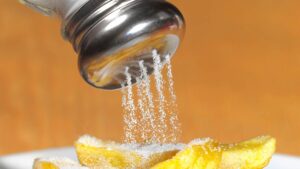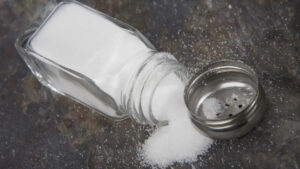Why rock solid pricing has the WA potash industry ready to launch

Pic: Tyler Stableford / Stone via Getty Images
Sulphate of potash (SOP), the premium grade fertiliser that is emerging as a new export industry for Australia, looks set to continue its run as one of the world’s most stable commodities.
The price of SOP, which is a fertiliser of choice for leafy, chloride-intolerant crops, has been remarkably steady over the past decade, tracking between $US450 ($688) a tonne and $US600 ($917) a tonne and recorded just 4 per cent annual average price variance.
By comparison, the more widely used Muriate of Potash (MOP), favoured for broadacre farming of carbohydrate crops such as wheat, oats and barley, has traded between $US230 a tonne and $US510 a tonne and recorded 14 per cent annual average price variance.
Industry participants and observers point to the rarity of sizeable primary deposits and the high cost of the Mannheim process through which around 50 per cent of supply is created as factors behind SOP’s long-running price stability.
They also note that this stability does not appear to have been undermined by the onset of the coronavirus and the debilitating effects it has had on the global economy.
“All the pricing data that I’ve seen continues to be pretty stable,” Argonaut Securities research analyst Michael Eidne, who covers ASX-listed SOP hopefuls Salt Lake Potash (ASX:SO4) and Agrimin (ASX:AMN), said.
“The soft commodities have been holding up pretty well; everybody still has to eat, it’s a vital part of life. Nothing has changed in that sense.”
Tony Swiericzuk, managing director of Salt Lake Potash, which is developing the Lake Way SOP project near Wiluna and plans to bring additional lakes into production in the future, shared a similar view.
“SOP prices have not changed for the past three months, not to mention the past 10 years,” he said. “They have held a very steady line since we’ve been riding through the coronavirus.
“I think that really reinforces the specialty nature of SOP and the markets that demand it – fruit and vegetables, berries, nuts and so on.
New supply can be absorbed
By Eidne’s reckoning, Lake Way will be the first WA SOP project to market, adding 245,000 tonnes per annum to global supply from 2021.
It is unlikely that every other project being progressed in the state will go ahead, but there would appear ample scope for the introduction of additional tonnages from those that are successfully developed.
READ: Potash stock guide — how the Pilbara could help feed the world
“It is important that new supply is introduced onto the market in an orderly fashion to protect margins,” Eidne said.
“However, the market is growing at 3 per cent CAGR [compound annual growth rate], which is the equivalent of 250ktpa growth in demand a year and therefore the market could absorb 1.7mtpa over a six to seven-year period.
“There is also the potential a greater supply will lead to a growth in demand as well given the attractive properties of SOP versus MOP.”
In a note initiating coverage on Salt Lake Potash published in November, Euroz analyst Jon Bishop said product quality could ultimately be a determining factor in the success of the WA SOP sector.
“We believe the establishment of a WA-based SOP industry and the creation of an associated global brand can be driven by product quality,” he said.
“We are of a view that relative grade, low levels of associated impurities and deleterious (i.e. chloride) elements, solubility and potential organic certification will render WA-sourced SOP as a premium product.”
Salt Lake Potash expects to produce a low chloride standard powder SOP product grading more than 53 per cent K2O from Lake Way, which compares favourably to the 48-50 per cent product typically produced in China and the 50-51 per cent product that is standard elsewhere around the world.
The company will also produce a fertigation-grade high potassium, low chloride water soluble product for use in micro-irrigation, a segment of the market that is seeing strong growth.
Industry consulting group CRU estimates that water-soluble SOP trades on average at a 20 per cent premium to standard SOP.
As it will be produced from a primary source, WA SOP should also be highly competitive from a cost perspective compared to SOP produced through the Mannheim process and other secondary methods.
The Mannheim process produces SOP by adding sulphuric acid to MOP at a temperature of 600-800 degrees Celsius. Not only is it expensive, but hydrochloric acid is produced as waste (or a by-product).
Scope for new industry to prosper
Argonaut’s Eidne described the salt lakes of WA as “an unexploited natural source of SOP that can grow the world’s supply of this valuable fertiliser”.
Having run the ruler over six ASX-listed developers, he believed Salt Lake Potash and Agrimin were the most attractive from an investment perspective, citing the robust economics of each company’s flagship project and the calibre of the respective management teams as key selling points.
Eidne said Lake Way’s proximity to infrastructure was another major advantage aiding its development, and while noting the relative isolation of Agrimin’s Mackay project, believed the company had a viable plan to connect the project to the Wyndham port.
Other companies pursuing WA SOP developments include Kalium Lakes (ASX:KLL), whose shares have been suspended since late February as a review of its Beyondie Project is completed, Australian Potash (ASX:APC), Reward Minerals (ASX:RWD), BCI Minerals (ASX:BCI) and Trigg Mining (ASX:TMG).
NOW LISTEN TO: The Explorers Podcast with Barry FitzGerald: Salt Lake Potash
Related Topics
UNLOCK INSIGHTS
Discover the untold stories of emerging ASX stocks.
Daily news and expert analysis, it's free to subscribe.
By proceeding, you confirm you understand that we handle personal information in accordance with our Privacy Policy.








